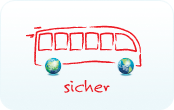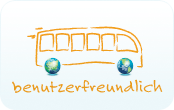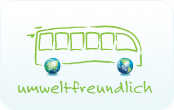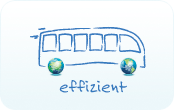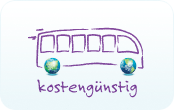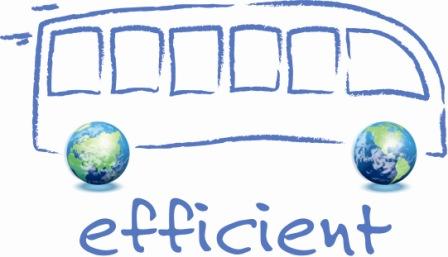 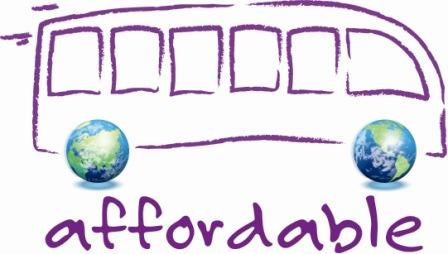 The new EU Regulation 1370/07 which entered into force on 3 December 2009 makes public service contracts the main tool for the organisation of urban, suburban or regional transport (except for typical deregulated systems which remain out of the scope of the new regulation). In the frame of the public service contract, authorities and operators will be free to establish the arrangements for the allocation of costs and revenues. It is then possible to favour public service contracts leaving more risks and competences to operators in order to boost efficient innovative solutions and develop entrepreneurship. The new EU Regulation 1370/07 which entered into force on 3 December 2009 makes public service contracts the main tool for the organisation of urban, suburban or regional transport (except for typical deregulated systems which remain out of the scope of the new regulation). In the frame of the public service contract, authorities and operators will be free to establish the arrangements for the allocation of costs and revenues. It is then possible to favour public service contracts leaving more risks and competences to operators in order to boost efficient innovative solutions and develop entrepreneurship.
Example: In 2003, the city of Helsingborg set a very strong political target, which was to double the number of public transport travellers in Helsingborg by 2014 in order to reach a necessary modal shift from individual to public transport. In 2004, the city organised for the bus network a public tender which provided opportunities for innovation and commercial thinking. Arriva won the tendered traffic by, amongst other things, proposing passenger incentive agreements with bonus payments to the operator for fulfilment of quality targets and passenger growth. Today 75% of the Arriva bottom line is generated by the incentive agreement. In 2004, the number of passenger journeys was 7 703 231. It reached 10 900 000 in 2008 which represents a growth of more than 40%. Another good example of the influence of operators’ added value is to be found in Valence (France) where, in 2006, CTAV (Veolia Transport Group) won, by competitive tendering, a delegated management contract. It is a net cost contract with fixed subsidy where: - Investments are made by the transport authority with an advisory role of the operator ;
- Fares are set by the authority
- Incentive system is implemented based on punctuality, cleanliness, staff attitude, information and costumer satisfaction
The selected operator was asked to redesign the network which was previously not adapted to the agglomeration and to customers' expectations. A first phase has been implemented in 2007 and a totally restructured network opened in September 2009 with positive results in terms of ridership: +3% in September, +4,5% in October, +8% in November (+5% revenues in November). The objective is more than 1 million journeys in 2012. In the Province of Limburg in the Netherlands, a multimodal public service contract, awarded to a unique operator for 10 years, gives autonomy to the operator (Veolia Transport Nederland) through clear sharing of responsibilities: - Veolia Transport is responsible for: generating revenue turnover with full commercial risk, for network design, and with freedom concerning the transport modes to be operated;
- Limburg Province (PTA) stipulates fares, sets contractual minimum service levels and approves decisions taken by the operator.
The system has been designed to evolve to lower subsidies and more passenger revenue: - 2008: PTA subsidies 46 million euros/Passenger revenue 58 million euros
- 2013 : PTA subsidies 50 million euros/Passenger revenue 65 million euros
A bonus-penalty mechanism is based on four criteria: on-time performance of services, yearly customer satisfaction increase, continuity of service and passenger revenue to cost coverage ratio. In terms of optimisation of the use of public funds, i.e. for the same amount of subsidies, 2007 shows a 30% increase in timetable hours on buses. As for ridership, increases of 29% have been registered on buses. |
  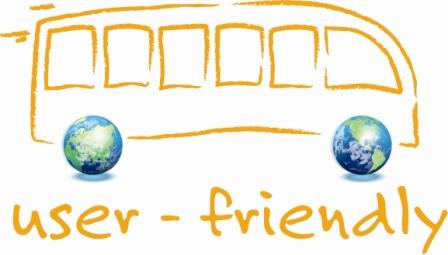 On deregulated markets, such as in the UK except for London, partnership agreements made between operators and local authorities, which involve substantial investment by the operators and the adoption of legal framework and policies to make bus and coach travel easier for people by the local authorities, lead to an essential shift from cars to buses and coaches. On deregulated markets, such as in the UK except for London, partnership agreements made between operators and local authorities, which involve substantial investment by the operators and the adoption of legal framework and policies to make bus and coach travel easier for people by the local authorities, lead to an essential shift from cars to buses and coaches.
Examples: - In Cambridge, working in partnership with Stagecoach, the Council has restricted traffic access to the historic core, developed park & ride sites and introduced parking restrictions on the key access route to the station. Stagecoach has introduced a fleet of new low-floor buses (costing GBP 7.8m) branded as the Citi network. The result is a doubling of bus passengers in 8 years.
- In Peterborough, Town Bridge is a critical link in the local traffic network. The Council and Stagecoach forged a new partnership providing bus priorities on the approaches to the bridge and automatic number plate recognition to prevent abuse by motorists. The Council also upgraded its bus stops and Stagecoach has introduced a branded Citi network with a fleet of new low-floor buses (costing GBP 4.3m). The result has been a 40% increase in bus passengers in 4 years.
- Another good partnership example can be found in Brighton. For many years, Brighton & Hove bus company and Brighton & Hove unitary authority have done a lot of work together. Basically, the council gives the buses lots of bus priority and in return the bus company continually invests in services, infrastructure and marketing. This long-standing, award winning relationship was crowned the 2009 Bus Operator of the Year at the UK Bus Awards.
- North of Brighton, West Sussex County Council started developing a Bus Rapid Transit project, some years ago, known as Fastway, mainly to give airport workers better public transport links to and from Gatwick Airport. The scheme opened in 2003 and the council provided all the infrastructure, including some guided busway sections. Metrobus (a Go Ahead subsidiary) provides the buses, sets the fares, determines the frequencies and does all the marketing. This entire relationship is underpinned by a simple two-page agreement where it is agreed to meet some very broad quality thresholds. This relationship works mainly because the authority provides the infrastructure, and the operator, which takes all the revenue risk, is incentivized to keep improving the service.
- Fastrack, the award-winning bus rapid transit system in North Kent in the UK, operated by Arriva on behalf of Kent County Council and Kent Thameside, is being delivered through one of the best examples of a public/private sector partnership. Since its launch, the system has carried more than three million passengers and is one of the leading UK examples of an innovative bus rapid transit system that can attract people away from the car.
|
